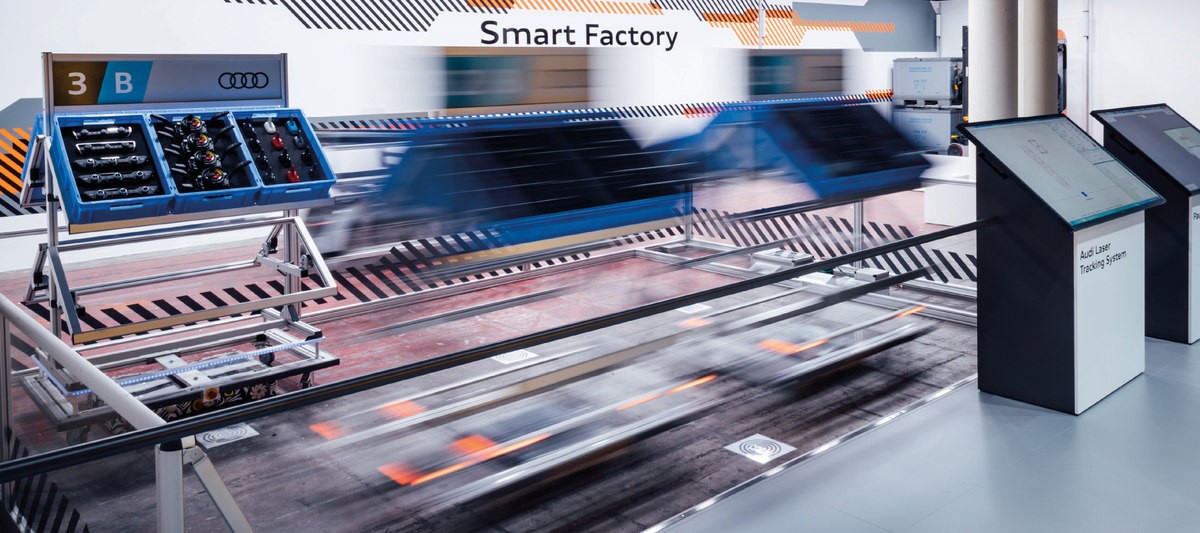
Factory 4.0
It is not often that you get the opportunity to look behind the scenes of a car manufacturer – the place where the vehicles originate, now and in future. At the Audi Summit in Barcelona, part of the focus was on the smart factory.
AUDI AG (copy & photo)
You might ask why the production of the Audi AG was presented on a par with the new Audi A8, Audi Sport, and Audi AI at the Audi Summit in Barcelona. The answer is very simple: Audi injects just as much innovative power into its production halls and processes as it does into its products and services. Today, they are part of a complex network, too. The smart factory of tomorrow will digitally synchronize all production steps and take modular production processes, artificial intelligence, and human–robot cooperation to a new level, in order to react in a more flexible, efficient, and resource-saving way to market and customer requirements. A short tour of the location is very much worthwhile.
Station 1: From the printer to the Moon and into series production
Silvery-gray and matt, with a comparatively coarse surface, the end product emitted by a metal 3-D printer makes a slightly sobering impression. However, it soon becomes clear what the major benefit of this technology is: the parts that could be observed in Barcelona, for example a wheel, gave the impression of being extremely delicate and light, but also robust and stable. The structure is almost confusingly complicated, as it has been designed with so many holes, edges, angles, and indentations. A high-tech item you could hold in your hand. The 3-D printing technology presented at the Audi Summit uses metal powder with a particle size of 15 to 60 thousandths of a millimeter. The printer applies the powder in thin layers, after which it is melted by a laser according to the CAD (computer-aided design) data, which creates the contour of the component. In this way, objects with free, complex geometries can be manufactured without prior tool production. Furthermore: analyses and tests have demonstrated that considerably higher rigidity can be achieved with a lower weight in comparison to conventionally manufactured parts. This is equally beneficial for automobile construction and for successfully putting the Audi lunar quattro rover on the Moon. Of course, the most important task for metallic 3-D printing is not primarily getting a piece of high-tech machinery onto the Earth’s satellite, but rather to ensure a strategic advantage for tomorrow, today. Gathering experience. Acquiring and proving expertise. Conquering new terrain in a literal and figurative sense.

Station 2: The conveyor belt for the 21st century
The conveyor belt was invented and introduced in the early days of the automobile with one main aim in mind: quick and cost-effective manufacturing of standardized products. Little to no consideration was given to working conditions or diverse customer desires. That changed over time, and recently the requirements and possibilities have surpassed the system. How to react to this? One answer could be seen at the Audi Summit in Barcelona: modular assembly in the smart factory. Small, separate work stations are intended to make highly flexible workflows possible in future – in temporal and spatial terms. Driverless transport systems (DTS), transport chassis and necessary parts between the individual stations independently and intelligently. A central computer recognizes the requirements of each section and steers the DTS to exactly where they are needed. In this way, it is first and foremost not people who follow the tempo set, but rather the system that adjusts to the worker and the taskbeing executed. This also allows individual strengths and weaknesses to be taken into account more effectively. Audi will assemble e-motors using a similar module concept at the Hungarian location in Győr, with series production starting there in 2018.
These possibilities in assembly are also intended to be used for painting. An animation at the Audi Summit showed an example of how the modular principle can be appropriately transferred. Here, too, that is being done in order to manage the growing complexity of the range, the desire for environmentally friendly and resource-saving production, and the requirements of the modern working world.
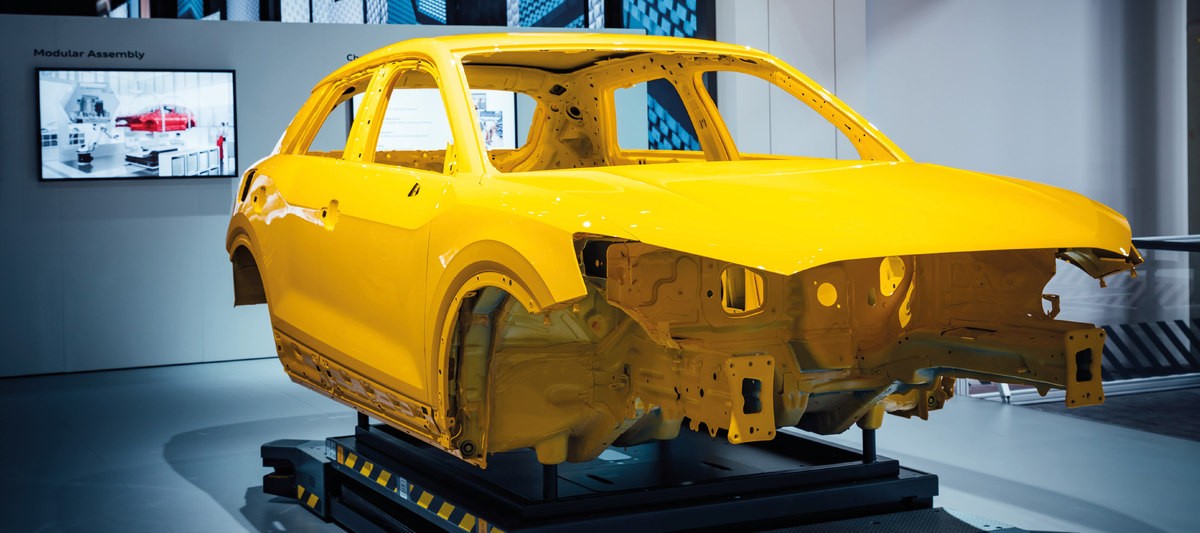
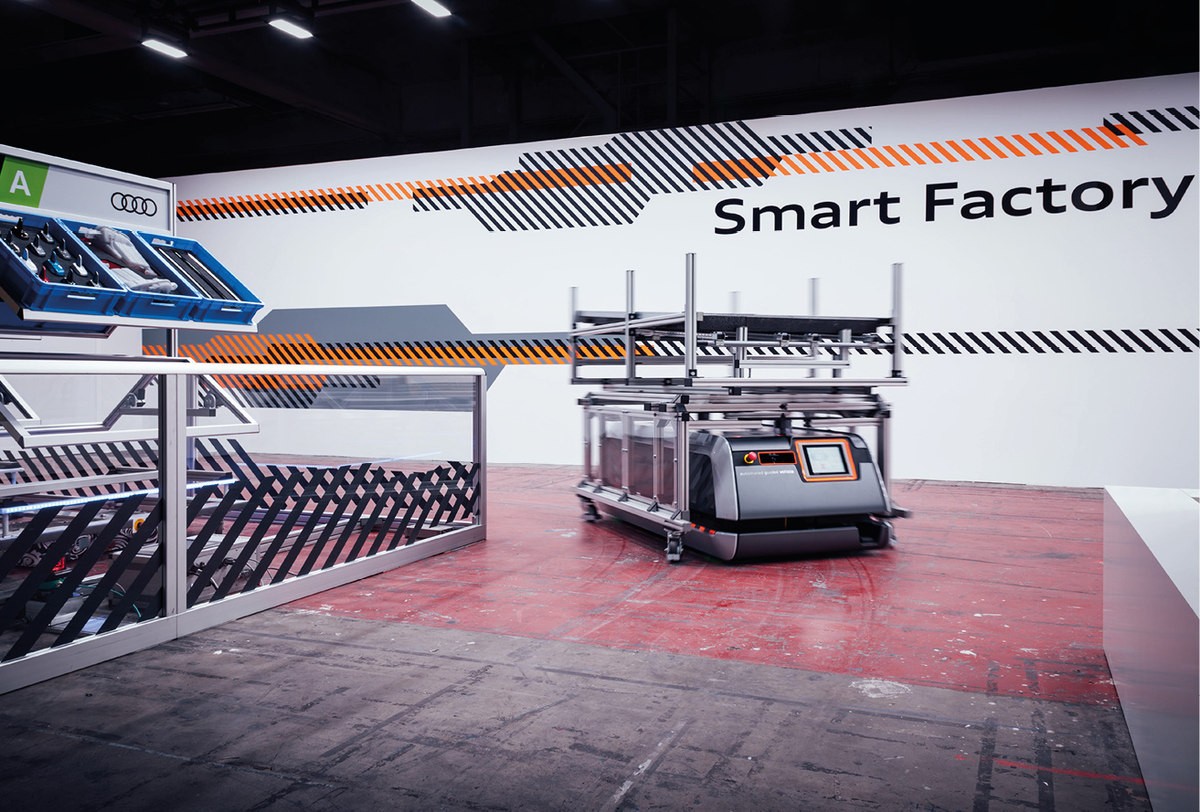
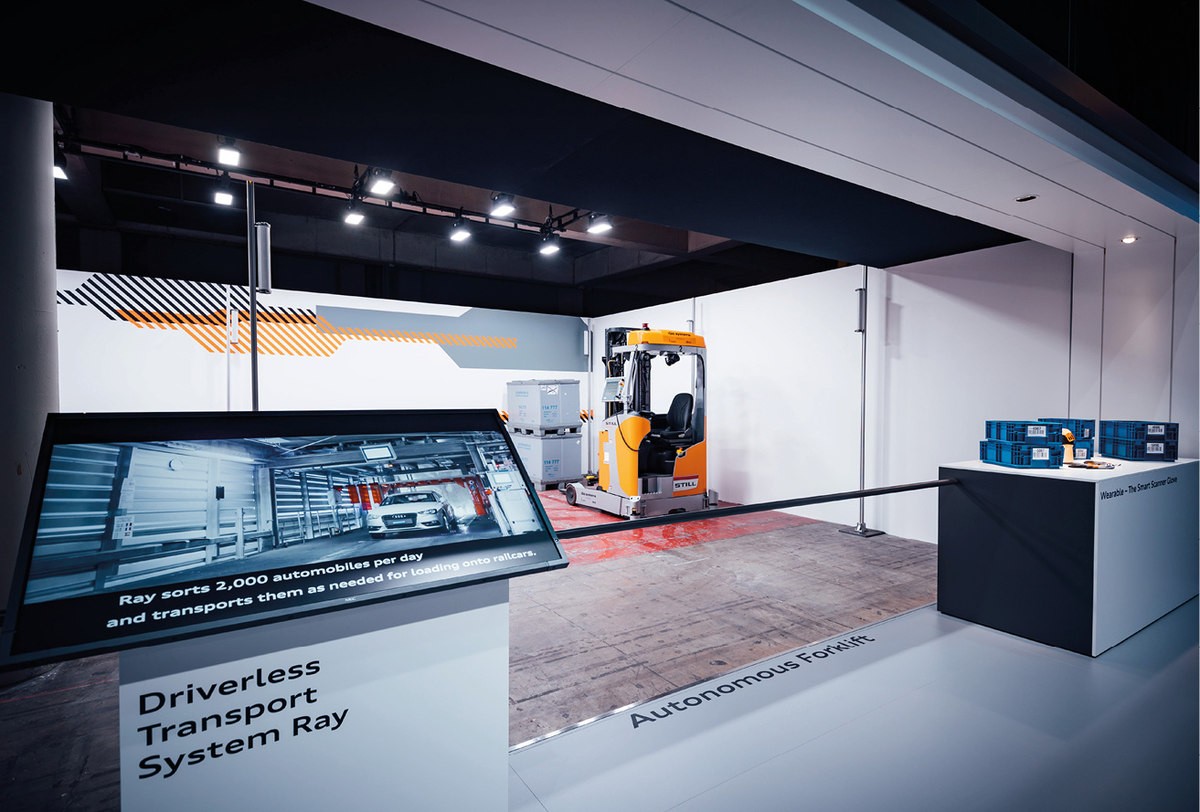
Station 3: Paula and Ray and dancing shelves
The driverless transport systems play a key role in the smart factory of the future. In Barcelona, there was the opportunity to witness the Audi AGV (Automated Guided Vehicle) at work. This driverless transport system, also known as “Paula” within the company, has three onboard laser scanners – two on the front and one on the rear. These allow Paula to orient herself and avoid bumping into people. One of the front scanners is tilted up so that it can even recognize objects hanging from the ceiling. One striking feature is that Paula does not follow a track or any colored markings on the floor, but rather moves around freely. Since March 2017, the AGV has been used in production as standard for assembly of the Audi A3/Q2 at the Ingolstadt factory. By the way: in a similar way to road traffic systems, Paula makes use of collective intelligence: the networking of the navigation data of several individual vehicles with an overarching fleet manager generates an intelligent overall system that increases the efficiency benefits.
Ray, also a driverless transport system, does something very similar in transport logistics. The electric-drive parking robot sorts and parks up to 2,000 cars each day so that they can be loaded onto railway wagons. At the moment, ten parking robots independently transport the new cars from production to the train loading. Self-driving forklifts will soon also be ready for regular use. Within the packaging operation for small-parts supply, the plan is for them to soon take over container transportation: the journey to the high-bay warehouse and the collection and drop-off of transport containers. The aim of this is to use less space, arrange transportation more efficiently, and – crucially – to reduce the risk of accidents at work.
Right next to Paula in Barcelona, shelves are turning in circles. This is not an error, but rather one of the main advantages of this system, still in the trial stage, which Audi appropriately refers to as “Dancing shelves.” The system is so flexible that it can turn on its own axis and move in all directions in the smallest of spaces. In contrast to DTS like Paula, the steering takes place using the Audi Laser Tracking System, i.e. external sensors. Using the system, several vehicles behind one another can be recognized and controlled by a single laser scanner. The ultimate aim is to ensure that the right pieces are in the right place at the right time, in line with the goods-to-person principle. The employee no longer needs to collect together the required components in the Audi internal components warehouse “supermarket” and bring them to the belt.

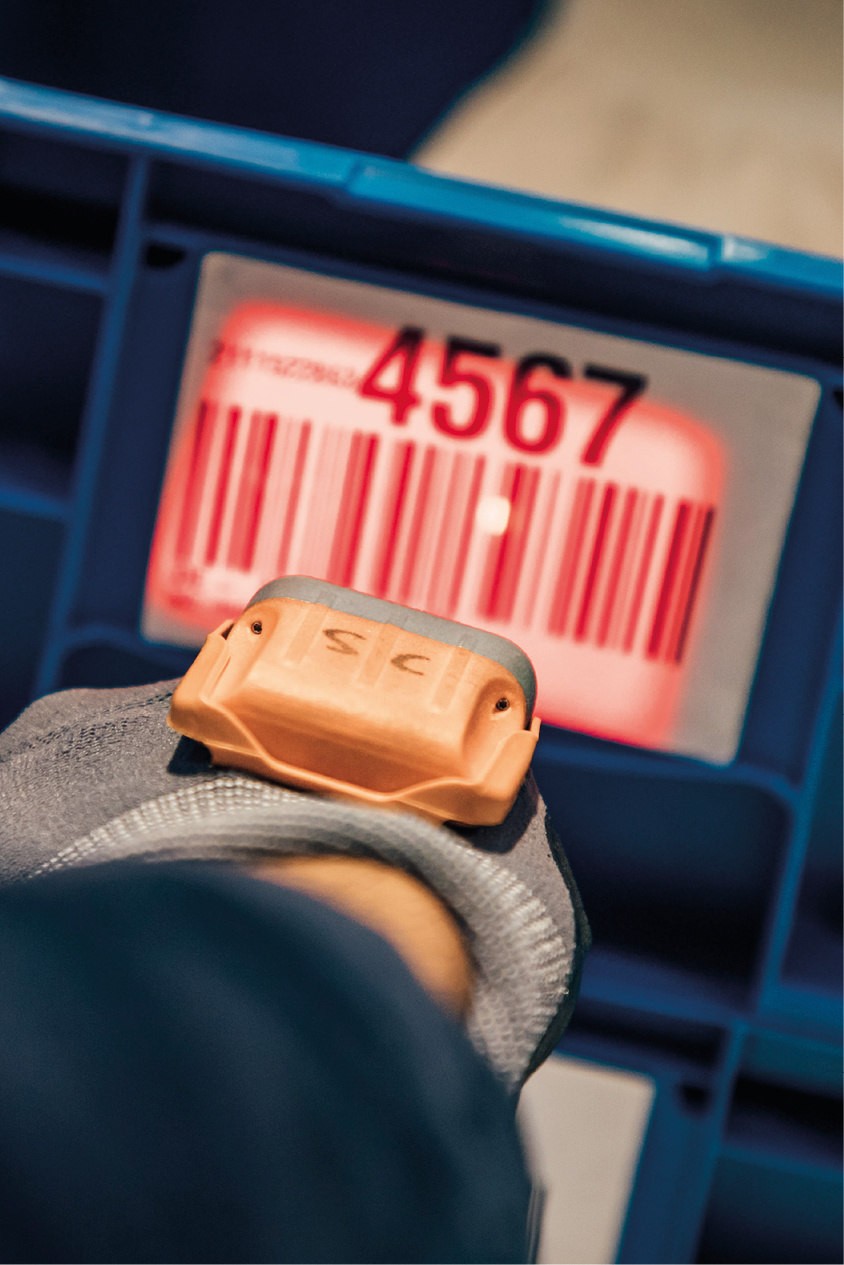
Station 4: A chair that really isn’t one, a glove, and a pair of glasses
Anyone who sat in the Chairless Chair during the Audi Summit might well have been reminded of a science fiction film. It is reminiscent of cyborgs; people merged with machines. The Chairless Chair is what is known as a passive exoskeleton. The employee wears it like a second pair of legs, which supports them when necessary and, like a chair, improves the posture of the person using it while they work. Two seat surfaces support the behind and thighs, while two braces made from carbon-fiber-reinforced plastic (CFRP) divert part of the body weight to the ground. They are fitted with joints at knee height and can be hydraulically adjusted to suit the height of the person and the desired sitting position. Of course – unlike a cyborg – the person can get out of the chair at any time. Admittedly, that is where the comparison falls down. In any case, the Chairless Chair increases the individual’s productivity.
The glove available to put on thereafter really was a glove, but perhaps the most intelligent one humankind has ever worn. Or ever will. However, you have to be careful. A bar code scanner is integrated into the “ProGlove”: the scanning function is triggered by simply pressing together the thumb and index finger. The device in the glove does not need to be focused on the bar code in the process; optical (LED light), acoustic (buzzer), and touch (vibration) signals show that the item has been scanned. The battery is designed for the length of a shift and can be fully recharged within two hours thereafter. Thanks to the integration of the scanner into the glove, an employee has both hands free for their work and saves additional movements such as picking up or putting down an external scanner. Overall, the workflow is made more ergonomic.
Let’s take a quick trip back to Hollywood, where Tom Cruise moves, turns, and sorts virtual elements within a space with hand movements in “Minority Report.” The way Audi imagines logistics training via virtual reality (VR) is very similar. At the moment, logistics employees all over the world still learn with real components and containers, which have to be stored in the training centers for this purpose. With the VR glasses, the employee can see a preprogrammed depiction of their logistics workplace anywhere. In the virtual world, they then have all the containers and components they need in front of them. The employee can even grasp and move their work items. To do so, they hold two controllers, which serve as their hands in the virtual world and which the logistics specialist can see and move. In real-world application, the new technology even crosses distance and language barriers, because in future, it will give logistics employees the opportunity to train workflows at the same time worldwide, with one another. For example, an employee in logistics in Ingolstadt can be virtually active in the factory in Mexico, and vice versa. The most incredible part: the technical equipment for an entire virtual world can fit in a single suitcase.